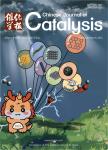In situ formation of amorphous Fe-based bimetallic hydroxides from metal-organic frameworks as efficient oxygen evolution catalysts
金属-有机框架原位转化合成无定形Fe基双金属氢氧化物催化剂催化析氧反应性能作者机构:State Key Laboratory Breeding Base of Green-Chemical Synthesis TechnologyCollege of Chemical EngineeringZhejiang University of TechnologyHangzhou 310014ZhejiangChina School of Chemical&Biomedical EngineeringNanyang Technological University62 Nanyang DriveSingapore 637459Singapore
出 版 物:《Chinese Journal of Catalysis》 (催化学报(英文))
年 卷 期:2021年第42卷第8期
页 面:1370-1378页
核心收录:
学科分类:081702[工学-化学工艺] 081705[工学-工业催化] 08[工学] 0817[工学-化学工程与技术] 080502[工学-材料学] 0805[工学-材料科学与工程(可授工学、理学学位)]
主 题:Bimetallic hydroxides Electrocatalysis Metal-organic frameworks Oxygen evolution reaction Photocatalysis
摘 要:Oxygen evolution from water driven by electrocatalysis or photocatalysis poses a significant challenge as it requires the use of efficient electro-/photo-catalysts to drive the four-electron oxygen evolution reaction(OER).Herein,we report the development of an effective strategy for the in situ chemical transformation of Fe-based bimetallic MIL-88 metal-organic frameworks(MOFs)into corresponding bimetallic hydroxides,which are composed of amorphous ultrasmall nanoparticles and afford an abundance of catalytically active *** MOF-derived NiFe-OH-0.75 catalyst coated on glassy carbon electrodes achieved a current density of 10 mA cm^(-2)in the electrocatalytic OER with a small overpotential of 270 mV,which could be decreased to 235 mV when loading the catalysts on a nickel foam ***,these MOF-derived Fe-based bimetallic hydroxides can be used as efficient cocatalysts when combined with suitable photosensitizers for photocatalytic water oxidation.



